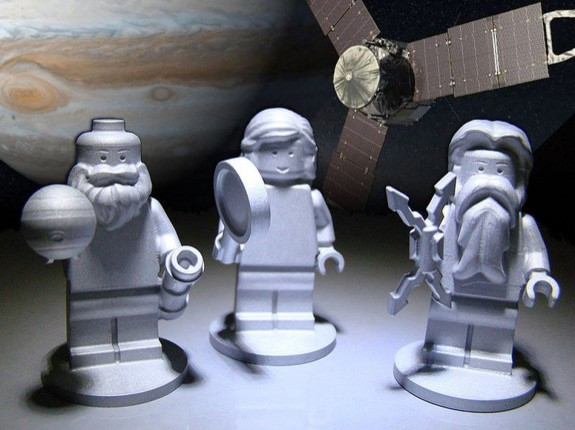NASA Juno: Cutting Edge Science, Lego Toys

NASA sent a new spacecraft into space on Friday, taking with it cutting-edge scientific instruments and Lego toys as it hurls towards its death in the name of science.
The solar-powered Juno spacecraft lifted off from Cape Canaveral Air Force Station in Florida at 12:25 p.m. EDT Friday to begin a five-year journey to Jupiter.
Lego designed and produced three aluminum variants in the shape of the Roman god Jupiter, his sister (and the probe's namesake) Juno, and the astronomer Galileo, according to reports.
NASA had approached Lego with the idea, which was receptive to the idea, and designed the figures according to their namesakes, with Jupiter wielding thunderbolts, Juno with a magnifying glass, and Galileo with his trusty telescope.
But the mission is more than fun and games. NASA also intends to collect important information as the spacecraft travels through the Jupiter atmosphere.
The satellite will photograph Jupiter's aurora and map its intense magnetic and gravitational fields for a year, giving scientist an understanding how the fields are distributed .
Juno's detailed study of the largest planet in the solar system will help reveal Jupiter's origin and evolution, scientists said.
"Today, with the launch of the Juno spacecraft, NASA began a journey to yet another new frontier," NASA Administrator Charles Bolden said. "The future of exploration includes cutting-edge science like this to help us better understand our solar system and an ever-increasing array of challenging destinations."
The spacecraft will orbit the planet's poles 33 times and use its collection of eight science instruments to probe beneath the atmosphere. It will also determine if there is a a potential solid planetary core.
Scientists said that with the four large moons and a number of smaller ones that encircle the planet, Jupiter acts like its own smaller solar system.
"Jupiter is the Rosetta Stone of our solar system," said Scott Bolton, Juno's principal investigator from the Southwest Research Institute in San Antonio.
"It is by far the oldest planet, contains more material than all the other planets, asteroids and comets combined, and carries deep inside it the story of not only the solar system but of us. Juno is going there as our emissary -- to interpret what Jupiter has to say."
After arriving at Jupiter in August 2016, the spacecraft will spend about a year surveying Jupiter and its moons to draw a detailed picture of its magnetic field and find out whether there is a solid core beneath its multi-colored clouds.
The research is building on what previous missions found about Jupiter, particularly the data Galileo gathered during a mission that ended in 2003. It may even provide clues about what to look for in planets outside the solar system.
Eventually the craft will go crashing into the planet, ending its 1,740 million miles (2,800 million kilometers) to complete the journey to Jupiter.
© Copyright IBTimes 2024. All rights reserved.





















